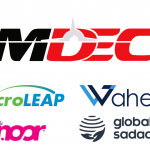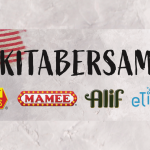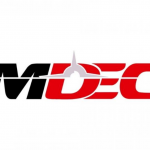By Navonil Roy, Sandeep Joseph and Chat GPT.
Ask any manager aged 40: FMCG, or Fast Moving Consumer Good Companies led the thinking in marketing and business innovation from the 1950s onwards as they drove consumerism globally.
They were the desired workplaces for fresh MBA grads too: companies like Procter & Gamble and Unilever represented the cutting edge thinking and activities of marketing.
They’ve innovated in supply chain, in-store marketing, product development, and data-driven marketing in the 1950s-1990s. This meant FMCG business valuations were one of the highest along with banks and oil majors.
However in the past decade, the Total Shareholder Returns from FMCG companies have been lower by three percentage points than stock exchange indexes like S&P 500.
The rise of e-commerce, change in retail landscape and the growth of D2C, which began pre Covid, and then was accelerated by Covid, has changed the way FMCGs think. Now e-commerce platforms, for instance, have significant influence over customer decisions due to their ability to access detailed analytics of purchase patterns, along with demographic and media consumption data, which they may not share fully with FMCGs who sell products on their platforms.
Some FMCG companies have used e-commerce marketplaces to reach customers, removing layers of wholesalers and other trade channels. But power still remains concentrated with e-commerce players due to their access to platform wide analytics.
In the past, physical retail including grocery chains had access to similar customer data but the growth of digital and analytics has increased data available and its potential impact, exponentially. Even today, Nielsen’s point of sale data analysis represents less than 50% of the total retail sales for a typical FMCG, as they don’t cover all retail formats.
So while FMCGs struggle to get good insights, e-commerce platforms have enhanced analytics and “digital display power” which helps them negotiate aggressive terms with FMCG brand owners, launch competing in-house brands, reducing barriers for new entrants offerings…
KPMG estimates in India, for instance, between 2019-22, online private labels generated 1.8 to 2 times higher margins than external brands sold by online retailers.
Compared to telecom operators and banks, while FMCGs like Nestle are data-rich, local and regional consumer goods marketers who do not have investment capability of multinational companies are lagging in the data analytics race.
Most FMCG companies have limited their analytics efforts to syndicated tracking research and digital marketing data. However the analytics opportunities for FMCG opportunities are much wider especially if FMCG companies are keen to bring back their relationship closer to the end consumer.
It is this under utilisation of analytics that has impacted stocking, optimisation of channels, cost management, product portfolio growth…
Journey to analytics may appear complex and expensive to many FMCG companies but the process can start with the simple step of just integration of existing data within the organisation via customised dashboard for better decision making.
As an example, we have created customized dashboards for clients which makes discussions re marketing strategies more informed and intelligent. We have worked with a food retailer to create offers that were customised by store location based on available sales and audience data from location vicinity.
We can also track if people who saw the client’s ad actually end up walking into the store, and after how long. This allows for optimization of media.
Multiple ad sets can be created and attribution modelling will enable better learning. We also create different in-store offers at different stores by times of day to maximise conversion and increase the revenue for each individual store.
Loyalty programs are one way to strengthen the relationships with end customers, which FMCG companies lost to retailers and e-commerce players. Digital technology has significantly reduced the cost for operating loyalty programs in today’s environment.
Building a strong loyalty allows segmenting offers to maximise revenue and increases lifetime value of customers. FMCG products with a high frequency of usage offers a wide range of data points to build customised offers and deliver it one-on-one via loyalty programs.
Ampersand grew one the largest loyalty programs in Malaysia for a diaper brand, increasing member base by 30% and member interactions significantly. This strengthens brand relationship with the end customer and achieves greater certainty to long term revenues.
Digital technology has increased media and distribution channels choices, with the average consumer accessing 10+ sources pre-purchase. This has made customer journeys more difficult to track and influence. Harvard Business research in 2023 found 77% consumer facing businesses reporting a further increase in channels post Covid.
In this complex and resource-crunched, inflation-affected environment Market Mix Modelling (MMM) allows optimising media and retail channels for maximising revenue contribution with least allocated resources.
Every CEO would love to know what part of her marketing mix is driving sales of her FMCG products. Based on econometrics and statistical modelling, MMM can help decide which media channels are most effective and drive highest ROAS.
How can MMM help CMOs and CEOs?
Budget Allocation: FMCG companies typically have limited marketing budgets, and they need to allocate their resources effectively. MMM provides insights into which marketing channels and tactics deliver the best results, allowing companies to allocate their budgets more efficiently to maximize their impact on sales and brand growth.
Strategy Optimization: MMM helps FMCG companies optimize their marketing strategies by identifying which product categories, geographic regions, and customer segments are most responsive to their marketing efforts. This information can inform product development, pricing strategies, and market expansion plans.
Competitive Analysis: MMM allows FMCG companies to assess their performance relative to competitors. By comparing their marketing effectiveness and sales performance with those of competitors, they can identify areas where they need to improve and gain a competitive edge.
Forecasting and Planning: MMM enables FMCG companies to forecast future sales and revenue based on different marketing scenarios. This helps them plan their marketing activities and set realistic targets for sales and growth.
Data-Driven Decision Making: In an increasingly data-driven business environment, FMCG companies can leverage MMM to make more informed decisions. By relying on data and analytics, they can reduce the reliance on gut feeling and intuition when making marketing and business strategy decisions.
Continuous Improvement: MMM is an iterative process that allows FMCG companies to continuously refine and improve their marketing strategies. By regularly analyzing data and adjusting their marketing mix based on the insights gained, they can adapt to changing market conditions and consumer preferences.
Ampersand Advisory executed MMM for a consumer goods business, using Bayseian probabilistic methodology to identify impact of each media and retail parameter and levels at which saturation occurs. The company analysed long term impact of the variables to truly simulate real market conditions.
The recommendations from the model saw 15% growth in revenue while reducing costs. It helped re-allocate budgets and improve efficiency by more than 8%
Overall, Marketing Mix Modelling is a valuable tool for FMCG companies to optimize their marketing efforts, improve their ROI, and stay competitive in a dynamic and fast-paced industry. It helps them make data-driven decisions that can lead to increased sales, market share, and brand growth.
A more aggressive adoption of analytics within FMCG companies will help own the relationship with end customers and regain back the industry leading position that FMCGs enjoyed in the past. It’s a MMMust have for marketers!
MARKETING Magazine is not responsible for the content of external sites.









